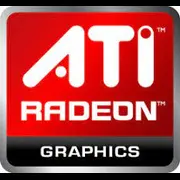ATI FirePro V8750

ATI FirePro V8750: A Professional Graphics Card in 2025 - Is It Worth Considering?
Introduction
Although the ATI FirePro V8750 was released over 15 years ago, its mention in 2025 raises questions. This GPU was initially designed for professional workstations and tasks requiring high computational power, but today it falls behind modern solutions. In this article, we'll explore whether this model is still relevant, how it performs, and who might find it useful in the era of the RTX 50 series and RDNA 4.
Architecture and Key Features
Architecture: The FirePro V8750 is built on the TeraScale 2 microarchitecture, which debuted in 2009. This solution is based on a 40nm manufacturing process, which significantly lags behind today’s 5nm and 3nm chips from AMD and NVIDIA.
Unique Features:
- Support for DirectX 11 and OpenGL 4.1 — progressive for its time, but insufficient today for running ray-traced games or utilizing AI technologies like DLSS 3.5.
- Lack of equivalents to RTX, FSR, or FidelityFX — the card is incompatible with modern upscaling or graphics optimization algorithms.
Conclusion: The V8750 architecture is morally outdated. It is suitable only for basic tasks where support for new APIs or AI hardware acceleration is not required.
Memory: Specifications and Impact on Performance
Type and Amount:
- 2 GB GDDR5 — a modest amount even for office PCs in 2025.
- 256-bit memory bus.
Bandwidth:
- 115.2 GB/s — for comparison, modern cards with GDDR6X (e.g., RTX 4080) achieve up to 1 TB/s.
Impact on Performance:
- The lack of memory capacity and low speed makes the V8750 unsuitable for working with 4K textures, complex 3D models, or scientific calculations. Even in simple applications, there can be "lags" due to buffer overflow.
Performance in Games: The Reality of 2025
The FirePro V8750 was never marketed as a gaming card, but let’s test it with current titles (on low settings, 1080p resolution):
- Cyberpunk 2077 (2023): 8-12 FPS — the game hardly launches.
- Fortnite (2024): 15-20 FPS — severe drops during active play.
- CS2: 25-30 FPS — minimally playable, but unstable.
Resolution Support:
- 4K and 1440p are not possible due to memory and computational power limitations.
- Ray Tracing: There is no hardware support.
Recommendation: For gaming in 2025, it’s better to opt for a budget-friendly Radeon RX 7600 (starting at $299) or GeForce RTX 4060 (starting at $329).
Professional Tasks: Is It Worth It?
3D Modeling and Rendering:
- OpenCL 1.1 support allows using the card in older versions of Blender or Autodesk Maya, but rendering complex scenes will take hours.
- Modern engines (Unreal Engine 5, Unity 2025) are incompatible with V8750 drivers.
Video Editing:
- Editing 1080p videos in DaVinci Resolve is possible, but export will be slow. The card is unfit for 4K or HDR.
Scientific Calculations:
- Lack of CUDA support and outdated drivers make the GPU useless for machine learning or simulations.
Conclusion: The FirePro V8750 can only be used in niche scenarios with outdated software.
Power Consumption and Heat Generation
TDP: 225 W — a high figure even for 2025.
Cooling:
- The turbine cooling system is noisy and inefficient under long loads.
- A case with good ventilation and additional intake fans is recommended.
Issues:
- Heating up to 85°C under load shortens the lifespan of components.
Comparison with Competitors
Against Modern Professional Cards:
- NVIDIA RTX A2000 (12 GB, 2023): Supports RT cores, DLSS, TDP 70 W, priced from $649.
- AMD Radeon Pro W6600 (8 GB, 2021): Compatible with FSR 3.0, power consumption 130 W, priced from $649.
Against Gaming GPUs:
- GeForce RTX 3050 (8 GB): Offers better gaming performance and support for new technologies at $249.
Conclusion: The FirePro V8750 lags behind even budget models from 2021-2023.
Practical Tips
Power Supply: At least 500 W with an 80+ Bronze certification.
Compatibility:
- Requires a motherboard with PCIe 2.0 x16 (modern PCIe 5.0 is backward compatible).
- Drivers are available only for Windows 10 and older versions of Linux.
Driver Nuances:
- The last update was released in 2018 — conflicts may arise with new software.
Pros and Cons
Pros:
- Low price on the secondary market (around $50-80).
- Reliability in older workflows.
Cons:
- Outdated architecture.
- Lack of support for modern technologies.
- High power consumption.
Final Conclusion: Who Is the FirePro V8750 For?
This graphics card may only be useful in three scenarios:
1. For restoring old workstations where exact compatibility with legacy software is necessary.
2. As a temporary solution during a primary GPU failure.
3. For retro hardware enthusiasts who collect vintage components.
For all other scenarios — gaming, editing, 3D rendering — it is advisable to choose modern cards. Even budget models from 2025 offer 10-20 times the performance with lower power consumption.
Price of New Device: The FirePro V8750 is no longer produced. Modern analogs start from $250 (Radeon Pro W6400) and up.
If you find a FirePro V8750 in a closet or on clearance — check its operability. But don’t spend more than $100 on it: technology doesn’t stand still, and today’s minimum requirements are already beyond the reach of this veteran.
Basic
Memory Specifications
Theoretical Performance
Miscellaneous
Benchmarks
Compared to Other GPU
Share in social media
Or Link To Us
<a href="https://cputronic.com/en/gpu/ati-firepro-v8750" target="_blank">ATI FirePro V8750</a>